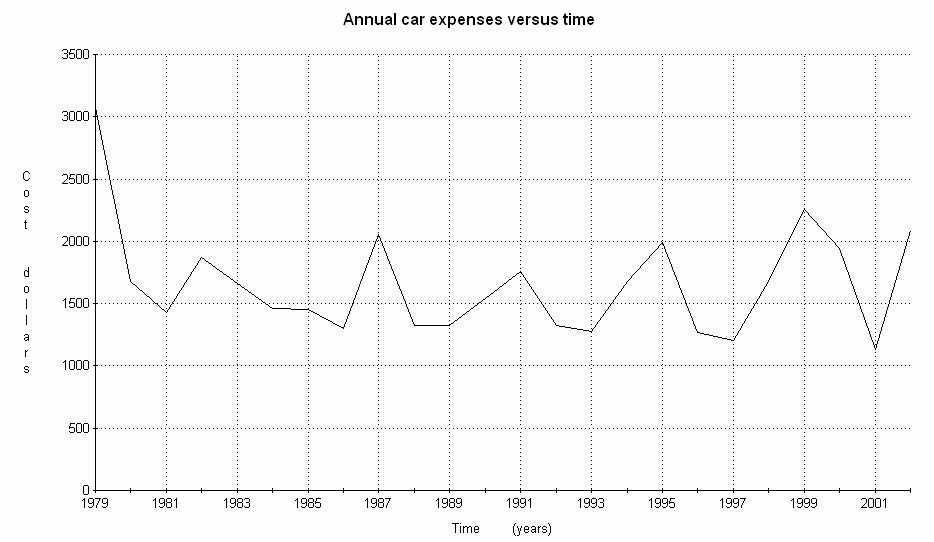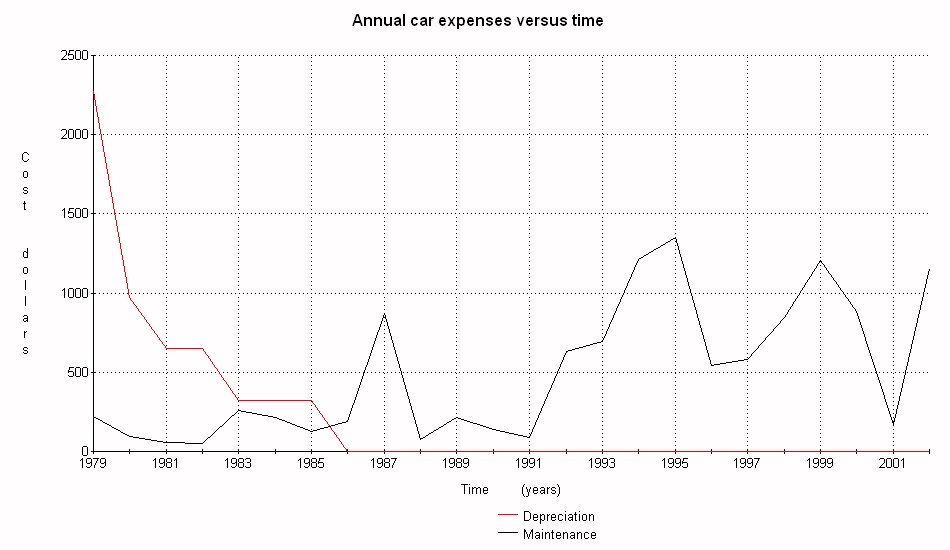
Rich
Slow
For some of you, the thought of owning an old car is frightening. You worry that it will break down and leave you stranded. On this web page, you will learn that well maintained old cars are almost as reliable as new cars.
First, I must alleviate your fears of being stranded. If your car breaks down, the worst thing that can happen is that you must make a telephone call for a tow truck that will tow you and your car home to safety. You will have to pay for the tow truck and the repair, but this is nothing compared to the depreciation of a new car. If you worry that you do not know which tow truck to call, then join an auto club like AAA (American Automobile Association, $48 per year). This is not an endorsement of AAA. It is simply a reminder that such organizations exist.
Because information on the expenses of maintaining old cars is impossible to obtain without an expensive statistical survey, I will discuss the expenses of my car. Hopefully, it is representative of what you will experience if you keep a car for several years. I own a 1979 Chevrolet Impala. I have had it for its entire life. In the following paragraphs, I will break down its expenses into various categories including, of course, maintenance.
Figure 1 shows the expenses of the Impala plotted against time. Depreciation, maintenance, gasoline, and insurance are included. The initial purchase price, $6500, is not included, because depreciation more precisely covers the consequences of buying a car. As you can see, after the car depreciates, the annual cost stays between $1200 and $2100. This shows that the expenses year after year remain roughly constant.

No doubt you are worried that old cars are expensive to maintain. To examine this belief, Figure 2 shows the depreciation and maintenance expenses of the Impala. Initially, the car greatly depreciates and the maintenance is trivial. Eventually, the depreciation stops, but the maintenance cost grows. As high as the maintenance cost is in the worst year, it is still not as high as depreciation is in the first year.

To be practical, you should weigh paying another year of maintenance to paying for the first year of depreciation of the new version of your car. The new version of the Impala would cost $25,000. Its first year of depreciation would cost $8750. You may feel that this is an unfair comparison because subsequent depreciation is less. To consider the entire duration of the ownership of your car, suppose you buy a car and tend to keep it for ten years. A $25,000 car would depreciate by $21,250 in that time. You must save $2125 each year to save for the next car. (Even if you borrow money to buy the car, you still owe the dealer the same amount. Do not blame the car for your lack of cash.) If you can wait one more year before replacing the car, you get to keep the $2125 you saved. Your cost is the maintenance. As long as it costs less than $2125 to maintain your car for one year, you win.
A general rule that many people have is to keep the car for 100,000 miles. After this distance, which corresponds to ten years for the typical driver, the car may need a new paint job, transmission, brake rotors, and a third timing belt. It seems wasteful to get rid of a car before it needs these items.
It seems wasteful to get rid of a car after 100,000 miles, too. For many cars, it costs $400 for a new set of tires, $1000 for a paint job, and $1600 for a new transmission. These expenses are likely, but not in the same year. Most probably, the expense that should convince you to junk the car is a new engine. Even then, many people opt to keep the car.
HomepageCopyright © 1996 Alacrity Research